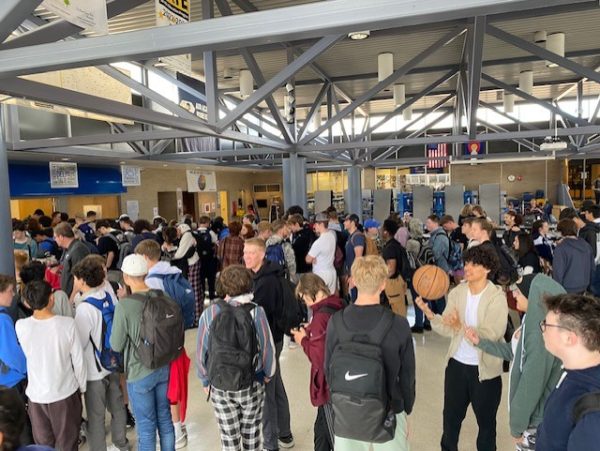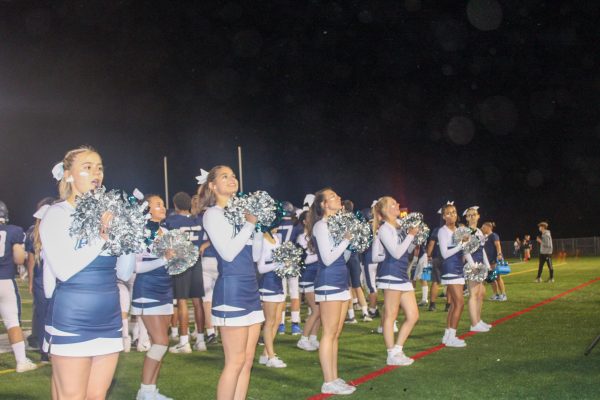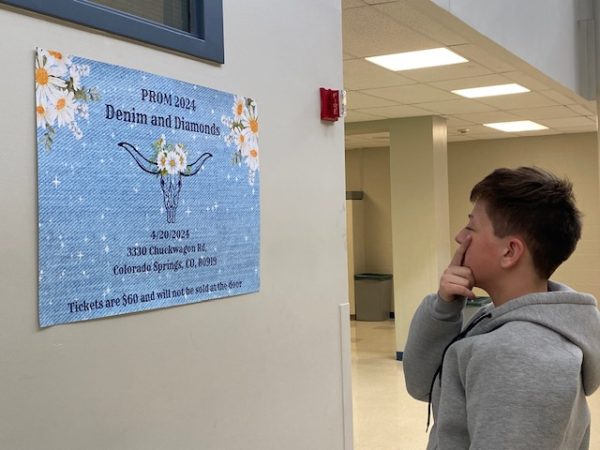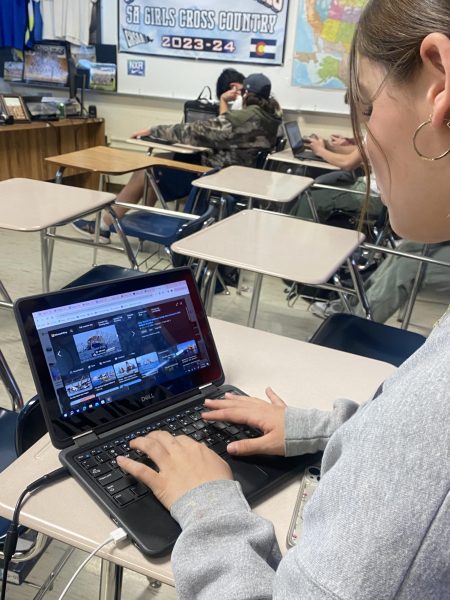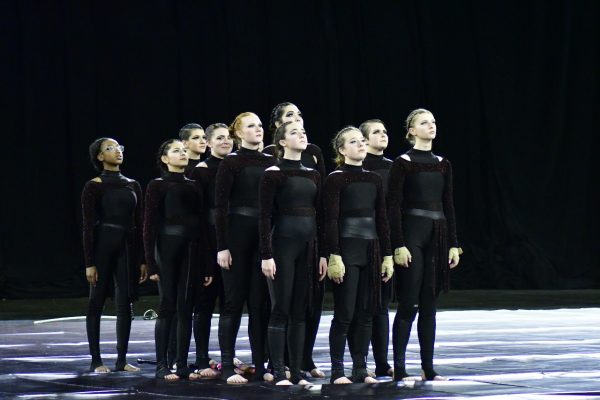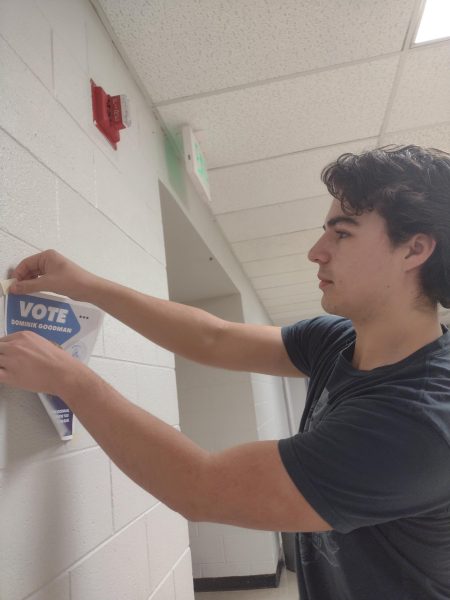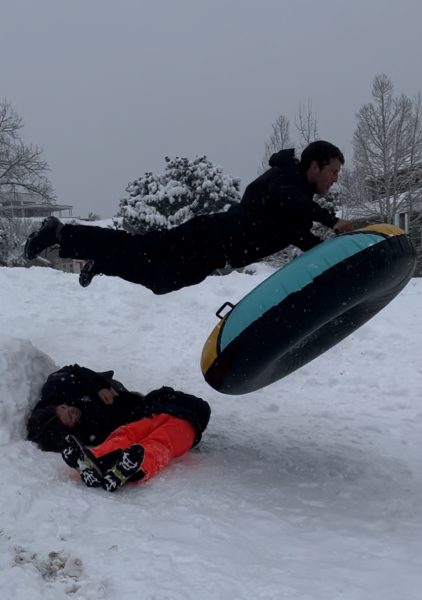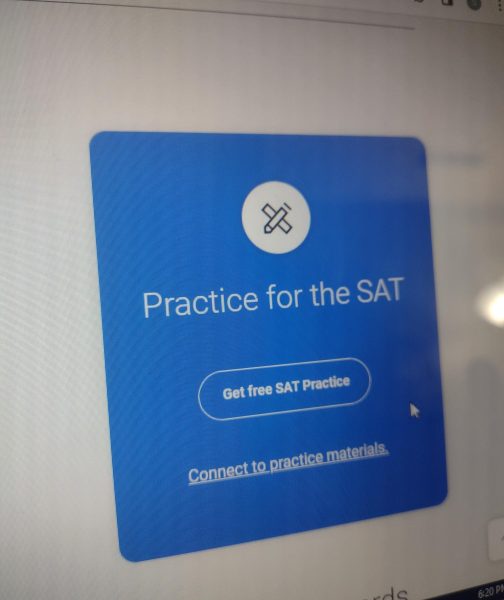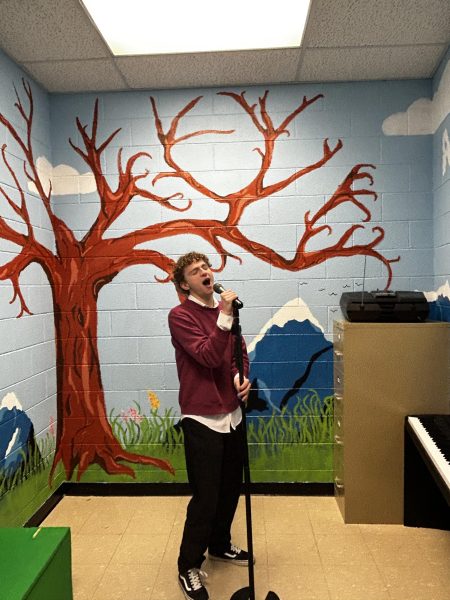Staff-to-Student Ratio
What causes the staff to student ratio at Air Academy?
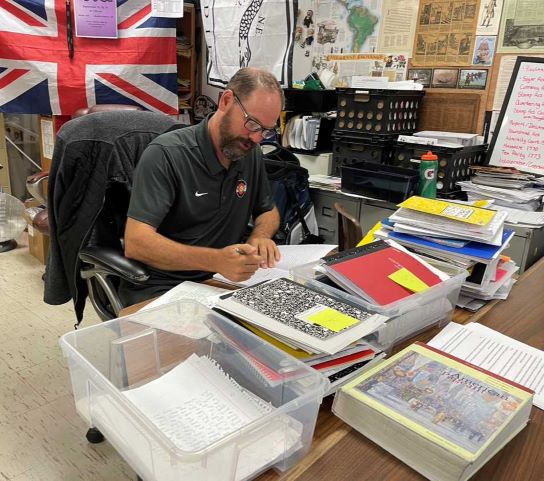
Social studies teacher, Ronald Gorr, grading notebooks for AP U.S. History during KAT time.
Students at Air Academy High School have recognized the importance of resources around the school such as the health office, the media center, and the front office. Recently some of these resources have been closed leading to inaccessibility for all students. These closures are due to several reasons happening all around the district.
“I think, even minor things like the library, while I understand why that’s happening, it definitely is an inconvenience to the overall learning ability of students,” Civics and government teacher, Richard Thiele, remarked due to the closure of the media center resource.
Students often question why the closures have been happening.
“We have a staffing shortage, especially on the classified end [para professionals, custodial staff, secretaries, etc.] So if you have someone who is out sick or has to be gone for some reason there are very few subs that we can get,” AAHS principal, Daniel Olson, remarked.
Media Centers library paraprofessional, Lissa Fulton, went into detail explaining how finding a substitute staff member is the equivalent of putting out an advertisement. Staff can request a substitute for a specific day, but there may not be a substitute available or it may be too late notice for someone to fill in.
The ongoing staffing shortage has been affecting AAHS since 2019 and has become more exaggerated due to a lack of new teachers.
“When you look at how many teachers are nearing the end of their profession and how many students are coming out of college in education it is about two to one. We have about twice as many people who are ready to retire than people coming into the profession,” Principal Olson reflected.
Due to staffing shortages, it has changed the student-to-staff ratio.
“We have about a 15 to 1 staff-student ratio,” Principal Olson stated.
The fifteen to one ratio is reflected in classes.
The master schedule plans out every single class during which periods are offered with which teacher. At the start of the year, classes had more students than available teachers, many spots on the master calendar were unfilled, and there was no knowledge of when the positions would become filled.
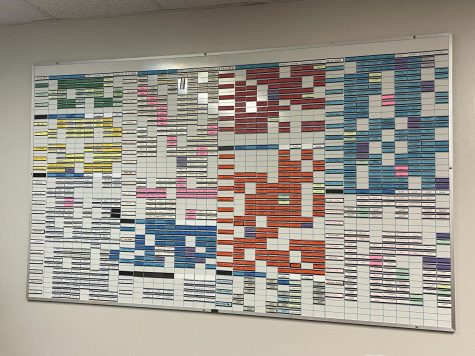
“This year at the start of the year we did not have him yet, her yet, we did not have her yet teaching a world language, we had all these classes and no one was teaching them,” Assistant Principal, Liz Walhof, remarked while pointing at the calendar.
Having more students to fill classes has led to an increase in class size meaning that students are filling every available seat in upper-level courses.
For teachers, Thiele remarked, “It would be nice to have smaller classes cuz I think if I could I’d give better feedback kids would take from that and that would help with the learning overall. This class [Silver 4] has 33 people in it.”
With an increase in inflation, there has been a decrease in teachers and substitutes.
“Unfortunately the rate of inflation is going up so everything costs more and wages in education are pretty stagnant now,” Principal Olson comments on the subject.
Working a salary is a bonus for teachers, as it ensures the ability for teachers to make a living. Teachers are also restricted by taking their grading home and bringing home the stress of school life.
“Why be a paraprofessional when you can make more with a way less stressful job like Mcdonald’s? The incentive isn’t really there for people to work in education,” Thiele stated when asked about what he would change.
AAHS sees varying degrees of staff-to-student ratios due to the ongoing teacher shortage as well as the increase inflation has had with no change to wages. Teaching and becoming a teacher is a dying profession that is metamorphosing into a civil necessity, which has the ability to be fixed with more attentiveness to teaching staff.

Hello, My name is Drew Lyle. I am a Senior at Air Academy High School. I enjoy photography, writing, and snacking. One of my beliefs is that life is experiential,...




